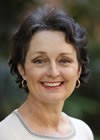NSW State Election 2011: Goulburn
Electorate: Goulburn
Margin: Liberal 1.3% versus Independent
Region: Southern Rural
Federal: Hume
Click here for NSW Electoral Commission map
The candidates

|
PRU GOWARD
|

|
Electorate analysis: The electorate of Goulburn has been created before the 2007 election with the abolition of Southern Highlands, taking much of that electorate’s area and supplementing it with 19,000 voters in Goulburn itself, which had formerly been in Burrinjuck. A 120 kilometre stretch of the Hume Highway runs roughly through the centre from the south-west to the north-east, with Goulburn at its western end. Other major population centres are Bowral and Moss Vale about 60 kilometres to the east. Goulburn had previously existed as an electorate from 1859 (three years after the establishment of the New South Wales parliament) until 1991, including a period as a three-member district after proportional representation was introduced in 1920. Labor held it from the reintroduction of single-member electorates in 1927 until 1965, when it fell to the Country Party with that year’s change of government. Robert Webster was the National Party’s member from 1984 until the seat’s abolition forced him to take refuge in the upper house, thwarting his leadership aspirations. He remained there until he resigned in 1995, and has occasionally been mentioned over the years as planning a comeback. Southern Highlands was created at the 1988 election and won for the Liberals by future Premier John Fahey, who had won the seat of Camden from Labor in 1984.
After the defeat of his government in 1995, Fahey entered federal politics as the member for Macarthur in 1996. The ensuing by-election produced a three-cornered contest in which Liberal candidate Peta Seaton overcame a primary vote deficit on preferences to defeat the Nationals’ Katrina Hodgkinson, later the member for Burrinjuck in 1999. Seaton was promoted to the front bench after the 1999 election and held the finance and energy portfolios from March 2006, despite her support for the leadership of John Brogden and association with the marginalised Left faction. It accordingly came as a surprise when she bowed out at the 2007 election, saying she wished to spend more time with her family. This created an opening for high-profile aspirant Pru Goward, who that very day had lost the Epping preselection vote to deputy director of public prosecutions Greg Smith. Goulburn was in fact a better fit than suburban Epping for Goward, who lived in nearby Yass.
Despite credentials including her appointment by John Howard as Sex Discrimination Commissioner and background as a Radio National presenter, political correspondent for The 7.30 Report and lecturer in economics and journalism, the party hierarchy’s efforts to smooth the way for Goward in Goulburn met considerable local opposition. At first she met resistance in the preselection from rival candidate Martin Laverty, a constitutional lawyer who was believed to have the support of the local branches. Laverty was prevailed upon by Peter Debnam to withdraw, but a new threat soon emerged with Goulburn mayor Paul Stephenson’s decision to run as an independent. After an early scare on election night, Goward ultimately pulled away from Stephenson in late counting and prevailed by 1.4 per cent, having won the primary vote 39.9 per cent to 24.7 per cent. Goward was immediately made Shadow Minister for Environment and Women, trading the former for community services in December 2008.
Analysis written by William Bowe. Please direct corrections or comments to pollbludger-AT-crikey.com.au. Read William’s blog, The Poll Bludger.

